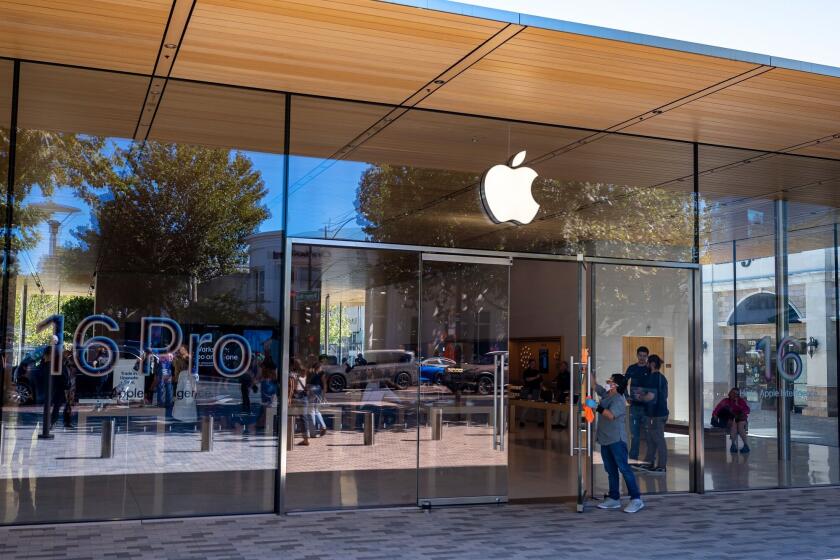IBM, Apple Will Close Door on Kaleida Labs : Software: A second joint venture, Taligent, will soon close, sources predict, in another sign of trouble for the companies’ alliance.
- Share via
SAN FRANCISCO — IBM Corp. and Apple Computer Inc. announced Friday that they will close the doors of Kaleida Labs, a multimedia software venture the companies launched four years ago. And sources said it is likely that Taligent, a second software venture started by the two companies when they formed a broad technology alliance in 1991, will soon be closed as well.
The developments with the two ventures offer the latest sign of the difficulties Apple and IBM have experienced in getting the most out of their much heralded linkup. Together, the two companies are believed to have invested about $40 million in Kaleida and another $100 million-plus in Taligent.
Apple and IBM executives were not available for comment.
Apple will now take control of Kaleida’s product, a programming tool for creating multimedia software. The software, dubbed Script X, was designed to be a standard for developing a wide range of multimedia products. But it was very late getting to market and its performance did not match the promise. It was thus largely eclipsed by rival products from companies such as Macromedia Inc. and Asymetrix Corp.
“Kaleida has had no reason to exist for about three years, and yet it went on and on like an agency of the federal government,” said Jeffrey Tarter, editor of Softletter, an industry newsletter based in Cambridge, Mass. “The surprise is not that they’ve pulled the plug, but that they’ve waited so long.”
Taligent’s original charter was to create a new operating system that could run on any piece of hardware, a plan that proved too ambitious. IBM and Apple opted instead to create software tools that would allow corporate computer users to customize OS/2 and AIX, two IBM operating systems.
IBM is said to be interested in Taligent’s software, which allows computer users to add custom features to operating systems software like IBM’s OS/2.
Both ventures were created as part of a broad effort to break the stranglehold on the personal computer business enjoyed by software powerhouse Microsoft Corp. and chip giant Intel Corp. IBM and Apple also joined with Motorola Inc. to further development of a microprocessor, the Power PC, that could compete with Intel chips.
Whereas the Power PC chip development worked mostly as planned--and Apple uses those processors in its Power Macintosh computers--the companies could not agree until this month on the design of a PC that would use the chip and run a variety of operating systems.
And the joint ventures’ troubles show how hard it can be to make such alliances work in the fast-changing technology world. The three men who negotiated the deal--Apple Chief Executive John Sculley, IBM research and development chief Jack Kuehler, and IBM Vice President James Cannavino--have all departed.
And Apple and IBM are today in much different shape than when the deal was inked: In 1991, Apple was posting record profits, while IBM had begun a precipitous decline. Today, Apple is struggling to regain market share and IBM, under new Chairman Louis V. Gerstner Jr., has staged a remarkable comeback.
“These were two- to three-year long projects,” said one source close to both companies. “A lot of things have changed. It’s very hard for a company to stay committed beyond 18 months in this business.”



